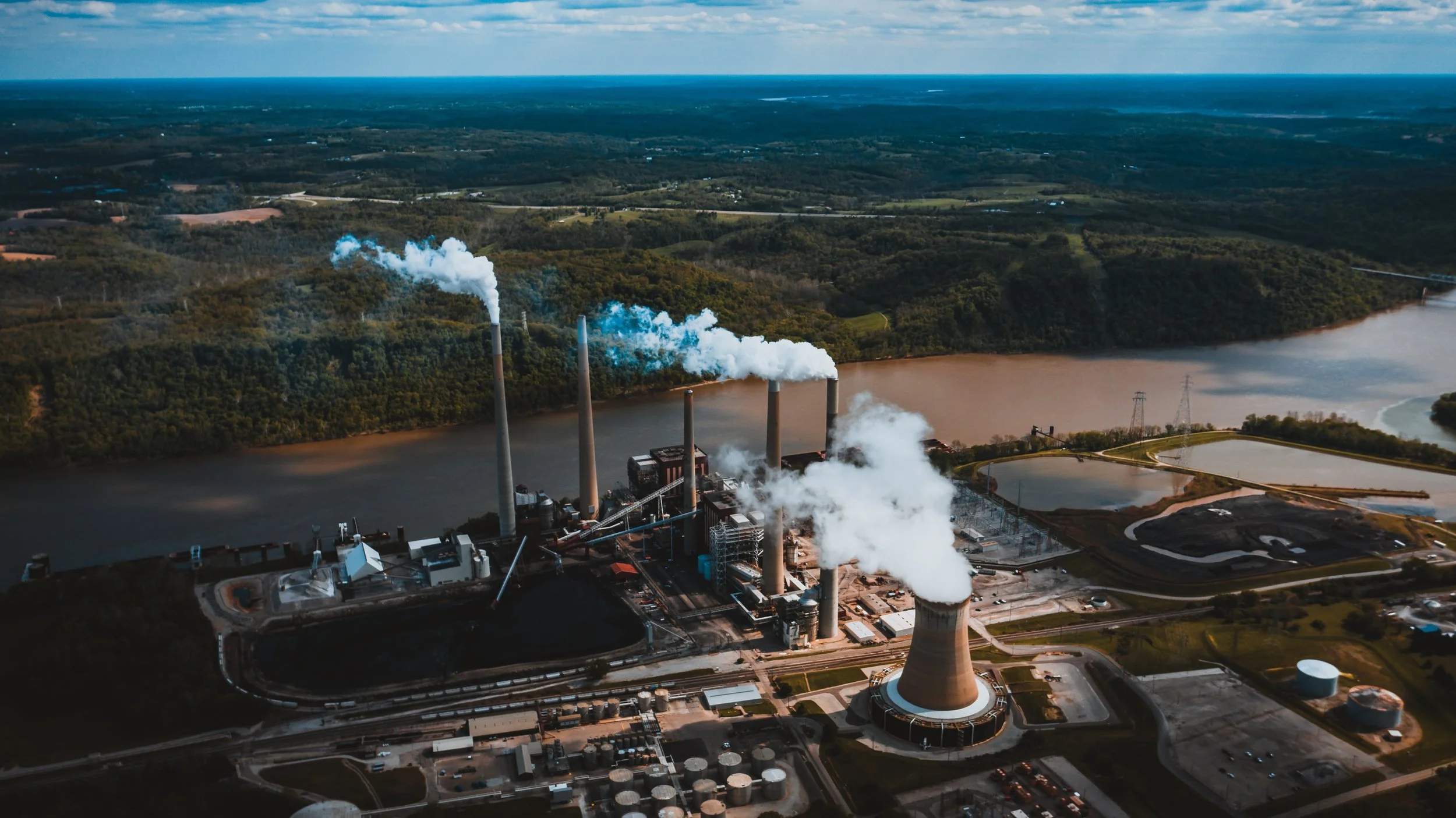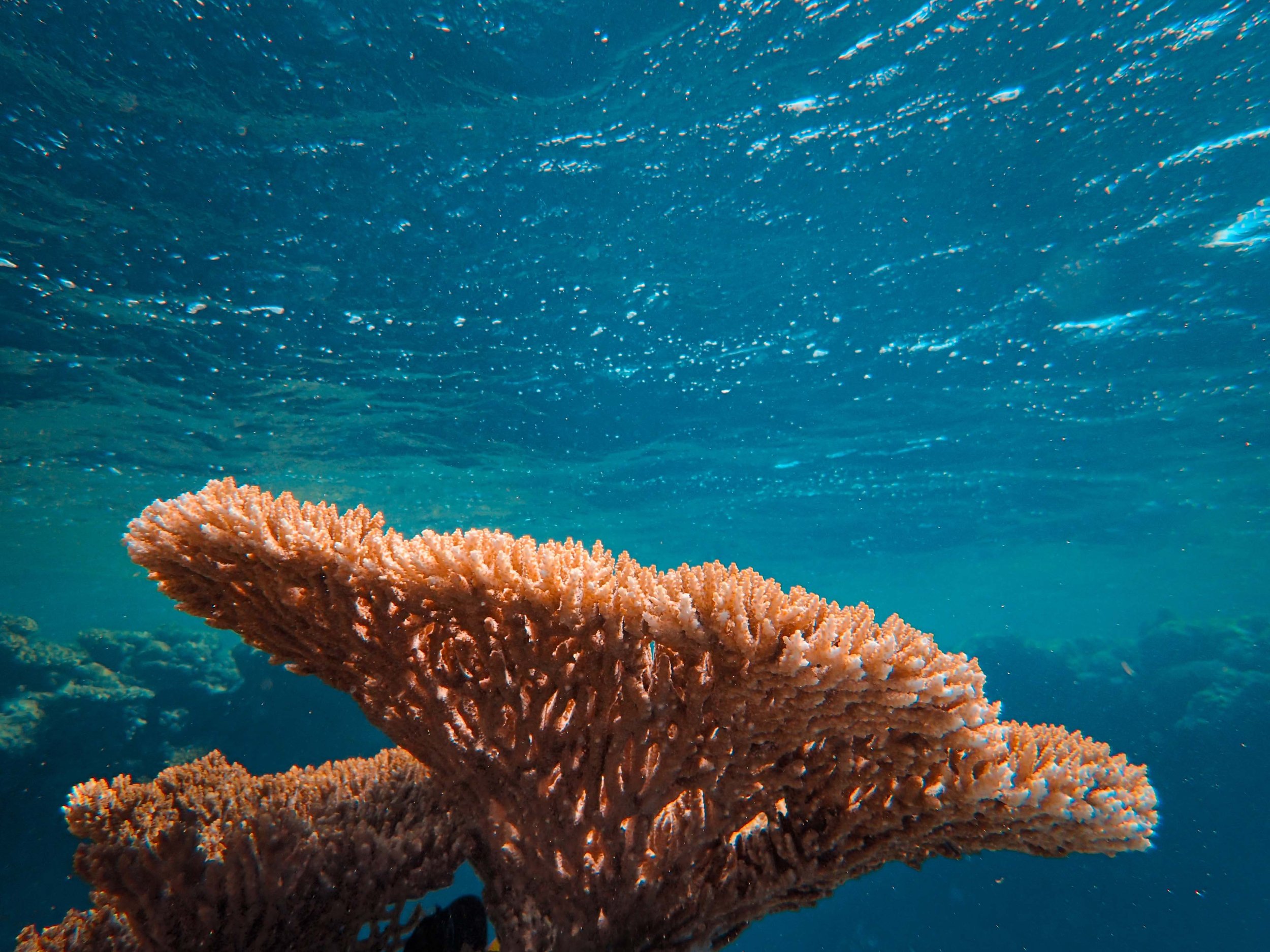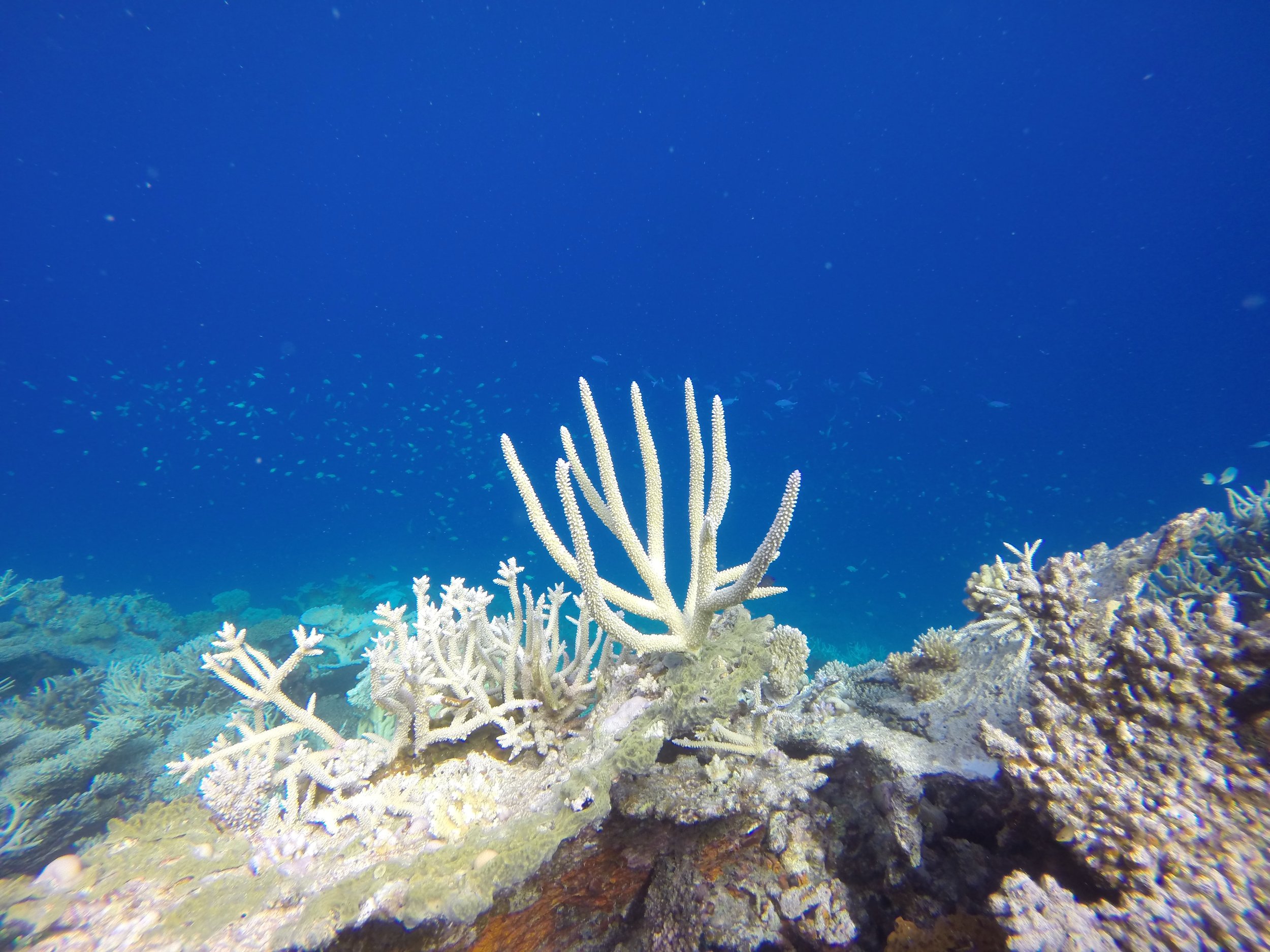Changing climate, changing ocean
Thea Moule
With the recent release of the Intergovernmental Panel of Climate Change (IPCC) report, the approaching United Nations Climate Change Conference (COP 26), and frequent reports of climate change protests in the news, the urgency of climate change is at the forefront of our lives. It is evident there is no time like the present to learn about what climate change is and how it impacts the ocean and marine organisms - so let’s dive in!
What is climate change?
To understand climate change, it’s important to firstly understand what climate is. Climate is defined as the average weather pattern of a location, which can naturally differ depending on the seasons. And a shift in the average conditions at a location is known as climate change.
The rapidly changing climate we are currently experiencing, from rising average temperature to extreme weather events, is due to human activities such as running factories, driving vehicles, and generating electricity, to name a few. These activities all burn fossil fuels that release greenhouse gas emissions into the atmosphere. Since the beginning of the industrial era, humans have been impacting the Earth’s atmospheric conditions and have caused carbon dioxide (CO2) levels to increase by an alarming 50%.
Greenhouse gas emissions being emitted into the atmosphere by industrial chimneys. Photo: Pexels.
Another activity causing drastic alteration to the climate is deforestation. The process of burning wood and cutting down trees releases carbon from the biosphere and reduces the capacity of forests to function as carbon sequesters. A carbon sequester is able to absorb CO2 from the atmosphere and lock the carbon away within wood for decades, if not centuries.
These activities combined have increased greenhouse gas concentrations in the atmosphere and are promoting the greenhouse effect (trapping heat within the Earth’s atmosphere). This is outlined in the latest IPCC report which states the global average temperature has increased by 1.1 degrees.
How does this affect the ocean?
With a changing climate, how does this alter the physics of the ocean? Let’s explore the two main areas further – ocean warming and acidification.
Warming: sea level rise and sea ice loss
The ocean acts as a natural thermal buffer, absorbing atmospheric heat, and in doing so regulates the Earth's climate. Due to greenhouse gases, the excess heat trapped within the atmosphere is being absorbed by the ocean and is causing a rise in oceanic temperature. In recent decades, ocean heat uptake has doubled, and a third of the absorbed heat has been recorded below 700m. The warming of seawater has caused a thermal expansion, leading to a rise in the global sea-level.
Landscape profile of the Greenland ice sheet. Photo: Unsplash.
Other factors are also contributing to sea-level rise. Increased atmospheric temperatures are causing land ice, such as mountain glaciers and ice sheets, to melt. Since the 1990s, the total loss of land ice (equating to 19.9 trillion tonnes) has caused sea-levels to rise by 35-millimetres, of which 10-millimeters were contributed by the Greenland Ice Sheet alone.
In the polar regions, atmospheric warming is also causing the loss of sea ice. Again, since the 1990s, the loss of sea ice in the Arctic has equated to a staggering 7.6 trillion tonnes and in the Southern Ocean to 2.5 trillion tonnes. A recent study shockingly predicted Arctic summers could experience complete loss of sea ice cover by 2035 – a scary reality that’s only a decade away!
With those statistics, it comes as no surprise the current loss of both land and sea ice combined is consistent with the IPCC worst case scenarios trajectories.
Ocean acidification
The ocean not only absorbs temperature, it also absorbs atmospheric CO2 (around one third). Once dissolved in seawater, CO2 is converted into carbonic acid and is then broken down into hydrogen ions. The increase in hydrogen ion concentration lowers the pH of seawater and increases ocean acidity – this process is known as ocean acidification.
With the rise in carbon pollution, so has the amount of CO2 absorbed by the ocean, making it more acidic. Since pre-industrial conditions, ocean surface water pH has decreased by 0.1. That’s a 30% increase in acidity. The current conditions are the lowest oceanic pH recorded in 300 million years – that’s long before the dinosaurs were alive!
What effect does this have on marine life?
The growing pressures from climate change are having profound consequences on marine organisms. Let’s delve into a few of the different effects currently being experienced.
Coral Bleaching
Warming by just 1 degree can cause coral bleaching, a state whereby coral expel their zooxanthellae (a photosynthetic algae) and turn colourless - hence named bleaching. At this stage bleached corals are still alive, but should the extreme thermal conditions prolong, the coral will eventually die from starvation.
In the past 5 years, coral reefs have undergone three extreme mass bleaching events. The impact of such events can reduce habitat structural complexity and homogenize coral reef fish communities. It’s this field of research that I am currently investigating – specifically, the impact of a thermal induced mass coral bleaching event on the size-spectra of reef fish assemblages (herbivores and predators). The size spectrum of reef fish communities determines how biomass varies with size, and I will be assessing the change in these communities in response to coral bleaching.
A colourful and healthy coral in the Red Sea (left). Bleached coral (in the centre) on a reef in the Maldives (right). Photos: Unsplash.
Effect of ocean acidification on species
Ocean acidification negatively impacts calcifying marine organisms – those with shells and skeletons made from calcium carbonate. For these marine organisms to grow, they obtain dissolved calcium carbonate ions within seawater. When excess atmospheric CO2 is dissolved, calcium carbonate ion concentrations are lowered, resulting in reduced growth rates for corals, and other marine invertebrates like molluscs and coccolithophores (a group of phytoplankton commonly known to form chalk).
The acidic conditions also dissolve the calcium carbonate structures of coral skeletons, pteropod (tiny snail) shells, and young crab's outer skeletons. It has also been observed to corrode the skin of sharks.
An aggregation of a type of mollusc called mussels found on the intertidal shore. Photo: Rita Steyn.
Distribution Shifts
The increase in ocean surface temperatures is driving distribution shifts in marine organisms. In general, warmer species are expanding their distribution ranges, whilst colder species are retreating poleward or deeper.
In temperate waters, tropical herbivore fish are widening their distribution ranges into these regions and overgrazing on macroalgae like kelp. Whilst in sub-Arctic waters, fish species retreat north, those that can only tolerate a small temperature range completely shifted their distribution range.
This is a brief overview of some of the main threats to the ocean and associated marine organisms, but there are many more impacts that are being experienced. Whilst it is clear that marine ecosystems are threatened under a changing climate, there is still hope! Together we can make a difference through education, conscious consumption from sustainable businesses and reducing our carbon footprint.





